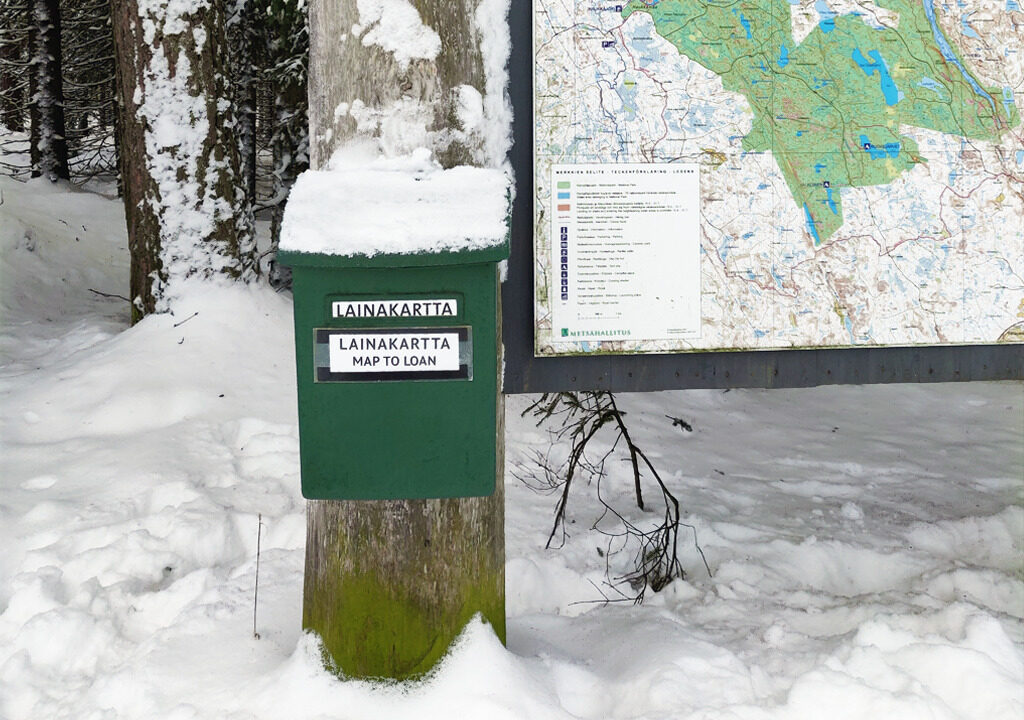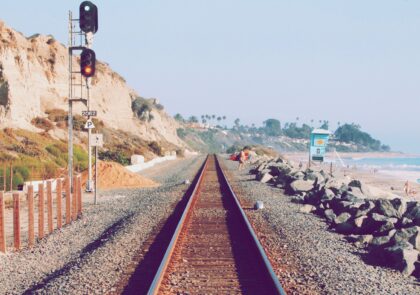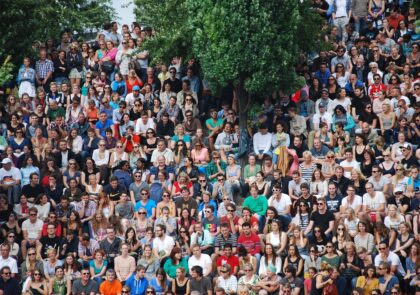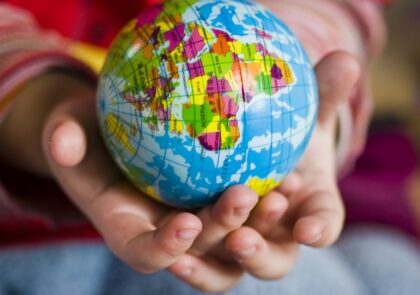
In a world that is threatened by climate crisis, biodiversity loss and depletion of natural resources, service providers cannot have business as usual mindset anymore. Materials need to circulate, and this benefits not only the environment but also service providers themselves as they can meet the customer multiple times during one product life cycle. Nature trails might not be the first place that comes to mind where thinking circular can be taken into account, but as any other services nature trails can be built the principles of circular economy in mind.
Author: Kaisu Isomäki
In linear value chain the usage of materials is not sustainable, and all possible capacity of the product and its materials is not utilized. In addition, products usually have a short lifespan. Especially at the end of the product’s life cycle most of the potential value is lost as only 10 % of materials circulate. In a linear value chain where the steps are “produce, sell, use and throw away”, the customer is met only once. What if during one product lifecycle the customer could be encountered multiple times? This can be actualized with a circular business model where the inefficiencies of linear value chain are turned into business value. (Ahonen 2022.)
Circular economy is the core of future’s business. It is an economic model that tackles the problems of today: climate crisis, biodiversity loss and depletion of natural resources. In circular economy instead of constantly producing new products, the current products and their materials are used as long as possible and as many times as possible. Instead of owning things, using services is supported. (Ahonen 2022.)
80 % of the product’s environmental impacts throughout its whole life cycle are decided when designing the product. At best a product, which is designed with the principles of circular economy in mind, is made of recycled materials and produced using renewable energy sources. It can be maintained, repaired, disassembled, recycled and reused. (Ahonen 2022.) In the current state of the world, circular economy can and should be taken into account when designing any service, such as nature trails and tourism around them.
Sustainable and responsible tourism
The difference between sustainable and responsible tourism is that sustainable tourism is the goal and responsible tourism is the way to reach that goal (Koivula 2021). Sustainable tourism promotes the growth of the destination in the long-term with a balanced use of resources to respond to the needs of tourists, locals, environment and travel industry as a whole (Unwto). Responsible tourism are the actions taken towards the sustainable state – the steps and strategies that lead to better places for people to live in and better places for people to visit (Goodwin 2020).
Responsible actions can be taken when both positive and negative impacts of tourism are recognized, negative impacts are minimized, and positive impacts are maximized. Responsible tourism needs cooperation between different operators. All stakeholders from municipalities to local people, from service providers to tourists need to play their part for the circular economy to work. (Koivula 2021.)
Providing people clear guidelines of how to minimize the harmful impacts of their visit is essential (CBD 2021). Well-thought tourist destinations educate visitors and teach them about the environmental and economical values of nature protection (Koivula 2021). Visitors need to know if they should stay on tracks or if they can wander around freely as well as where are the trash bins if there are any or must all garbage be taken back home with them. Clear guidelines with easy access helps visitors behave responsibly.
Towards sustainable and cost-effective nature tourism
The impact of design is as important when designing nature trails and nature destinations as when it is when designing any other product. While building the infrastructure of the site, it is important to carefully consider where the trails are placed, which materials are used and which vehicles using which energy source are needed for the construction (Koivula 2021).
Wood is more eco-friendly choice than concrete (Koivula 2021). Recycled wood is even more eco-friendly choice. If any trees need to be removed out of the way where the route is being built, it is worth thinking if the wood could be used as material for something else, such as benches, tables, dry toilets or guideposts. From the circular economy perspective, chopping the material for firewood of the lean-to shelters is not the best choice as after burning, the material has no more value to circulate.
By making design decisions that are material-wise and by designing the structures along the trails so that they can be repaired, maintained, reused and recycled when needed, is thinking circular. This includes thinking thoroughly how to minimize the wearing of the structures in the course of time. For example guideposts should be placed so that changing weather conditions and seasons affect them as little as possible. Wearing can be decreased by placing guideposts right next to the paths and directing them transversely to the wind direction and away from the direct sunlight (Räsänen & Saari 2011, 19).
Structures at the site should be designed and built so that they can be replaced only partly if necessary. If a table and benches are all attached together and one of the benches breaks, it is essential that the broken part can be removed and replaced with another. Replacing the whole entity is not responsible. In circular economy it is taken into consideration, where the structures will be placed at the end of their life cycle of their current form. Can the old equipment be given or sold to other businesses (Koivula 2021)? Can they be disassembled and be used again for something else? Ensuring that the materials have multiple life cycles, saves money and valuable resources.
In a product as a service concept, instead of selling the product, the outcome the said product can provide, is being sold or loaned (Essex 2018). The concept is associated with the circular economy. As an example suitable for nature trails, many visitors might want to use a map during their visit but not as many want to look at it after the visit anymore. Why not offer maps that the visitors can borrow and give back after the time well spent at the site? This is done for example in Helvetinjärvi national park located in the municipality of Ruovesi.
Even though practices that support sustainability are often seen more expensive than business as usual, they can actually lower operating costs in resource acquisition, usage and disposal (CBD 2021). Since even money is no longer an obstacle to making environmentally friendly choices, there is no reason why we should not make choices that support circular economy as it enables brighter, sustainable future.
References
Ahonen, M. Sitra. 2022. Löydä tiesi tulevaisuuden liiketoimintaan – kiertotalous on kartta kestävään bisnekseen. Presentation at Tulevaisuusfoorumi 2022 on 17 Mar 2022.
CBD. 2021. No guilt trips: Tourism is part of the solution for nature. Cited 5 Apr 2022. Available at https://www.cbd.int/article/tourism-part-of-the-solution
Essex, D. 2018. Definition: product as a service. Cited 1 Apr 2022. Available at https://www.techtarget.com/searcherp/definition/product-as-a-service
Goodwin, H. 2020. Dr Harold Goodwin Explains Responsible Tourism | Concept, Definition & More. Cited 1 Apr 2022. Available at https://www.youtube.com/watch?v=HxX3le-n-uY
Koivula, E. 2022. Sustainable and responsible tourism. Presentation at the webinar Sustainable development of nature sites and routes on 1 Dec 2021.
Räsänen, P. & Saari, H. 2011. Outdoors Finland – Vaellusreittien suunnitteluopas. Cited 1 Apr 2022. Available at https://www.businessfinland.fi/4accdb/globalassets/finnish-customers/02-build-your-network/visit-finland/julkaisut/of-vaellusreittien-suunnitteluopas.pdf
Unwto. EU Guidebook on Sustainable Tourism for Development. Cited 1 Apr 2022. Available at https://www.unwto.org/EU-guidebook-on-sustainable-tourism-for-development
Author
Kaisu Isomäki works as a project planner at the LAB University of Applied Sciences. Kaisu has studied the theme of circular economy in tourism as a part of the project Kurenniemi. The project is co-funded by the European Union.
Illustration: Kaisu Isomäki
Published 21.4.2022
Reference to this article
Isomäki, K. 2022. Thinking circular in nature tourism. LAB Pro. Cited and date of citation. Available at https://www.labopen.fi/lab-pro/thinking-circular-in-nature-tourism/






